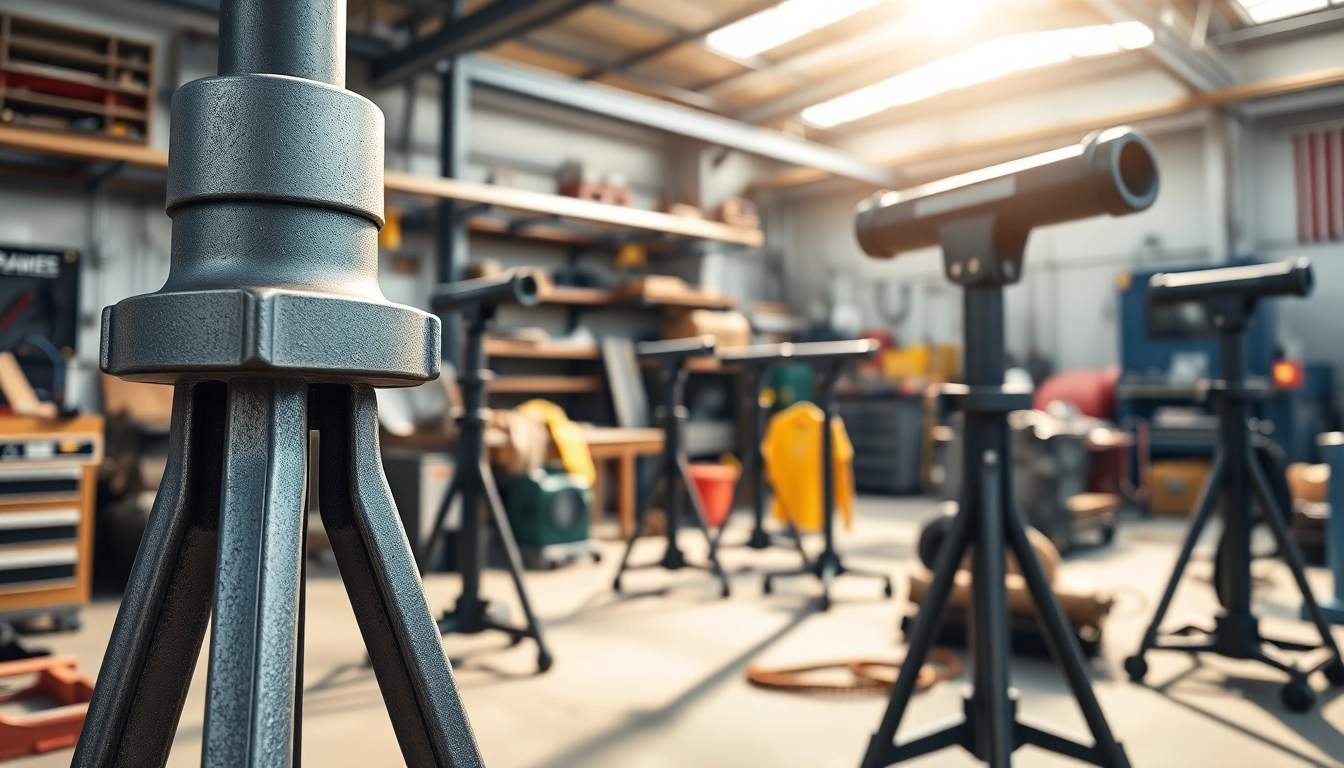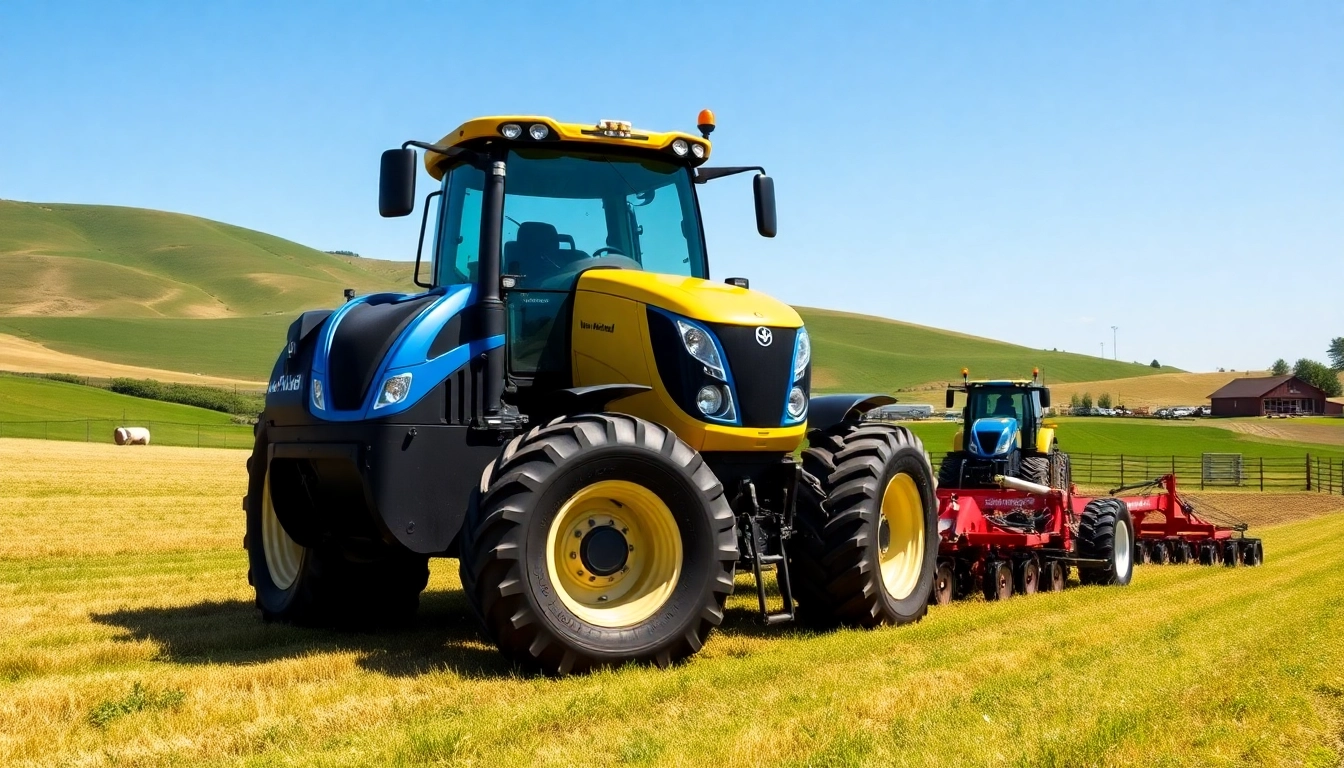Understanding Pipe Stands: What You Need to Know
Definition and Purpose of Pipe Stands
Pipe stands are essential tools widely used in various industries, including construction, plumbing, and welding. Their primary purpose is to support and elevate pipes during operations such as cutting, welding, and assembling. A well-designed pipe stand not only provides stability but also enables safer and more efficient workflow when handling different types and sizes of pipes. These stands help reduce strain on the worker and minimize the risk of accidents and injuries, allowing for a safer work environment.
Often adjustable, pipe stands can accommodate various pipe diameters and weights, making them versatile assets for both professionals and DIY enthusiasts. This adaptability ensures that they can be used effectively in a multitude of applications, from simple tasks at home to complex industrial operations.
Types of Pipe Stands Available
Several types of pipe stands are available in the market, each designed for specific functions and operational needs. Here are some of the most common types:
- Standard Pipe Stands: These are fixed-height stands used primarily for supporting pipes in a horizontal position. They are often made of steel or aluminum for durability and strength.
- Adjustable Pipe Stands: As the name suggests, these stands can be adjusted to different heights. They are ideal for situations where the elevation of the work surface needs to be modified frequently, such as in welding or pipe installation work.
- Pipe Roller Stands: Equipped with rollers, these stands allow the pipe to rotate freely, making it easier to work on. They are highly beneficial in welding and fabrication scenarios, where rotating the pipe is essential for accessibility.
- Heavy-Duty Pipe Stands: Designed to bear substantial loads, these stands are made from high-grade materials and are ideal for industrial applications. They can support large pipes with heavy weights safely.
- Collapsible Pipe Stands: These stands are designed for portability and ease of storage. They can be quickly set up and taken down, making them a favorite among contractors who work in various locations.
Key Features to Look for in Pipe Stands
When selecting a pipe stand, several features should be considered to ensure optimal performance and safety:
- Weight Capacity: Choose a stand that can adequately support the weight of the pipes you’ll be working with. Most stands come with specified weight capacities, so it is essential to assess this before making a purchase.
- Adjustability: Look for stands that offer height adjustments to accommodate different tasks. The ability to set the pipe at the desired working height can greatly enhance comfort and efficiency.
- Material Quality: Durability is crucial, especially in demanding environments. Stands made from heavy-duty steel or aluminum are typically more robust and long-lasting.
- Safety Features: Features such as rubber feet can add stability and prevent slipping, while locking mechanisms can enhance safety when working at height.
- Portability: If you need to move your stands often, consider lightweight, collapsible options that are easy to transport.
Best Practices for Using Pipe Stands in Various Applications
Pipe Welding and Fabrication
In pipe welding and fabrication, utilizing pipe stands can significantly enhance the quality of work and safety. Here are some best practices:
- Ensure that the stand is suited for the type of pipe being welded. For instance, heavier steel pipes may require more substantial support than lighter PVC ones.
- Adjust the height of the stand so that the pipe is at a comfortable working level to reduce fatigue and improve accessibility.
- Use roller stands to facilitate rotation, especially when welding around the entire circumference of a pipe.
- Always check that the stands are securely locked in place before commencing work to prevent accidental collapse or movement.
- In complex welding setups, consider using multiple stands to distribute the weight evenly across several supports, further increasing stability.
Construction and Plumbing Use Cases
In construction and plumbing, pipe stands serve a similar yet slightly varied purpose compared to welding. Here are key practices:
- Utilize adjustable stands for installations requiring varied pipe heights. This is especially useful when dealing with drainage systems that may have gradients.
- Identify and use stands that can support the materials being utilized, ensuring they are rated for weight and are compatible with pipe sizes.
- Make sure to set stands on a firm and level surface to provide maximum support and reduce the risk of tipping over.
- Regularly inspect stands for wear and damaged components, especially if used frequently, to maintain safety.
Maintenance and Safety Recommendations
Proper maintenance and safety compliance are crucial to prolonging the life of pipe stands and ensuring a safe working environment:
- Regularly clean the stands to remove dirt and debris that may affect their performance or lead to rust and corrosion.
- Inspect all adjustable and locking components to ensure they are working correctly to avoid accidental failures during use.
- Store the stands in a dry area to prevent rusting and degradation, especially for those made of metal.
- Train all users on proper setup and tear-down procedures to minimize risks associated with incorrect usage.
- Encourage the use of appropriate personal protective equipment (PPE) while operating around and utilizing pipe stands.
Comparing Top Pipe Stands Brands in the Market
Features that Set Them Apart
As the market for pipe stands continues to grow, several brands have emerged as leaders due to their distinctive features and quality. Here are some distinguished brands:
- Sumner: Known for their heavy-duty designs and adjustable features, Sumner pipe stands are a favorite among contractors for welding and plumbing tasks.
- Ridgid: Renowned for robustness, Ridgid stands often come with a longer warranty and are designed for heavy-duty applications.
- B&B Pipe: This brand boasts a range of options catering to the oil and gas industry, emphasizing high weight capacities and durable construction.
- VEVOR: Offering affordability without sacrificing quality, VEVOR pipe stands are popular among both professionals and DIY enthusiasts.
Pricing and Performance Analysis
Pricing for pipe stands can vary considerably based on brand, material quality, and specific features. Here’s an overview of typical pricing brackets along with performance evaluations:
- Economy Range: Expect to pay between $50-$100 for basic models adequate for light-duty applications.
- Mid-Range: Pipes stands in this category often range from $100 to $250 and include more versatile features like adjustable heights and better construction materials.
- High-End Range: Premium models, especially those designed for industrial use, can cost upwards of $300 but provide superior durability, weight capacity, and advanced features.
- Performance ratings generally suggest that higher-priced models yield better longevity and consistency, making them ideal for frequent use in challenging environments.
User Reviews and Ratings
User feedback is a rich source of insight into the actual performance of pipe stands. Here are some notable trends from user reviews:
- Many professionals emphasize the importance of stability, particularly in high-load scenarios, with adjustable stands often receiving high marks for versatility.
- Users frequently mention the ease of use and portability as significant advantages, especially for collapsible models that save space on job sites.
- Negative reviews often cite issues with locking mechanisms failing over time, thus prompting buyers to consider products with robust design features.
How to Safely Set Up and Utilize Pipe Stands
Step-by-Step Installation Guide
Setting up pipe stands correctly is essential to ensure worker safety and operational efficiency. Here is a simple step-by-step guide:
- Assess the work area, ensuring it is clean, level, and free of any obstructions.
- Choose the appropriate pipe stand model based on the specifications of the pipe being used.
- Position the stand on the designated spot and adjust the height as necessary to ensure that the pipe can be installed at a comfortable working level.
- Lock the stand in place to prevent any unintended movement during operation.
- Place the pipe securely on the stand, ensuring that it is balanced and stable before commencing any work.
Common Mistakes to Avoid
To maximize safety and effectiveness when using pipe stands, here are common pitfalls to sidestep:
- Neglecting to check the weight capacity of the stand before use can lead to collapses; always verify specifications.
- Failing to lock adjustable features can result in sudden drops, so ensure that all settings are secured.
- Overloading stands beyond their rated capacity is a significant risk factor and should be strictly avoided.
- Ignoring regular maintenance can lead to wear and tear unnoticed until it results in failure during a critical operation.
Tips for Maintenance and Care
To ensure the durability and safety of your pipe stands, implement these maintenance tips:
- Clean your stands regularly to prevent the accumulation of rust and debris, especially after outdoor usage.
- Inspect for signs of wear, such as bent legs or damaged locking mechanisms, and replace components if necessary.
- Keep an inventory of all tools and parts associated with your stands so that you can easily access components when repairs are needed.
- Store stands in a dry, temperature-controlled environment to mitigate the risk of corrosion.
Future Innovations in Pipe Stands Technology
Trends Shaping the Pipe Stand Market
The pipe stand market is witnessing numerous innovations that aim to improve usability and functionality. Key trends include:
- SMART Technology: Emerging technologies, such as incorporation of sensors to monitor load and stability, are being explored to enhance safety and performance.
- Lightweight Materials: The industry is shifting towards advanced materials that offer strength without considerable weight, making transport easier.
- Modular Designs: Future pipe stands are expected to evolve into modular systems that allow for customizable configurations based on specific project needs.
Eco-friendly and Sustainable Options
With an increasing emphasis on sustainability, many manufacturers are developing eco-friendly pipe stands:
- Some brands are utilizing recycled metals and biodegradable materials in their manufacturing processes.
- Energy-efficient production methods are becoming more prevalent in manufacturing operations in an effort to reduce the carbon footprint.
- Longer-lasting designs are being favored over disposable options, encouraging a more sustainable lifecycle approach.
What to Expect in New Designs and Features
As technology advances, new designs are predicted to become prevalent in pipe stands:
- Enhanced safety features, such as automatic sensor locks and adjustable bases with built-in vibration dampers, are expected to become standard.
- Improvements in user convenience, including integrated tool storage and quick-connect mechanisms, may streamline workflow on-site.
- Innovations in aesthetic designs, including customizable colors or branding options, may help businesses distinguish themselves in the marketplace.



